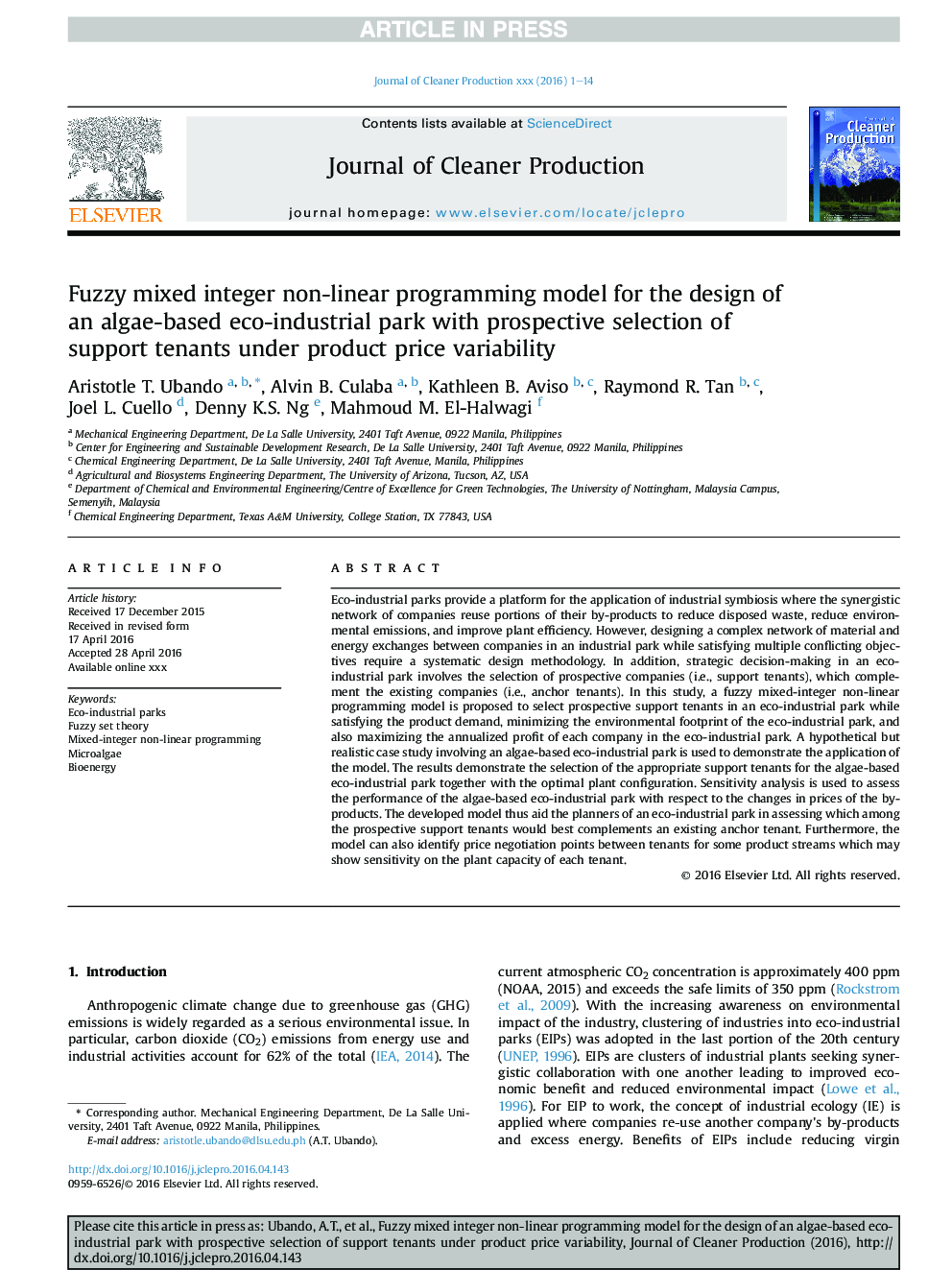| Article ID | Journal | Published Year | Pages | File Type |
|---|---|---|---|---|
| 5480620 | Journal of Cleaner Production | 2016 | 14 Pages |
Abstract
Eco-industrial parks provide a platform for the application of industrial symbiosis where the synergistic network of companies reuse portions of their by-products to reduce disposed waste, reduce environmental emissions, and improve plant efficiency. However, designing a complex network of material and energy exchanges between companies in an industrial park while satisfying multiple conflicting objectives require a systematic design methodology. In addition, strategic decision-making in an eco-industrial park involves the selection of prospective companies (i.e., support tenants), which complement the existing companies (i.e., anchor tenants). In this study, a fuzzy mixed-integer non-linear programming model is proposed to select prospective support tenants in an eco-industrial park while satisfying the product demand, minimizing the environmental footprint of the eco-industrial park, and also maximizing the annualized profit of each company in the eco-industrial park. A hypothetical but realistic case study involving an algae-based eco-industrial park is used to demonstrate the application of the model. The results demonstrate the selection of the appropriate support tenants for the algae-based eco-industrial park together with the optimal plant configuration. Sensitivity analysis is used to assess the performance of the algae-based eco-industrial park with respect to the changes in prices of the by-products. The developed model thus aid the planners of an eco-industrial park in assessing which among the prospective support tenants would best complements an existing anchor tenant. Furthermore, the model can also identify price negotiation points between tenants for some product streams which may show sensitivity on the plant capacity of each tenant.
Keywords
Related Topics
Physical Sciences and Engineering
Energy
Renewable Energy, Sustainability and the Environment
Authors
Aristotle T. Ubando, Alvin B. Culaba, Kathleen B. Aviso, Raymond R. Tan, Joel L. Cuello, Denny K.S. Ng, Mahmoud M. El-Halwagi,
